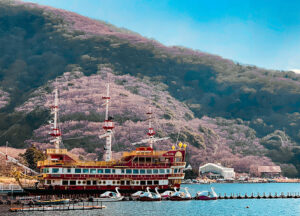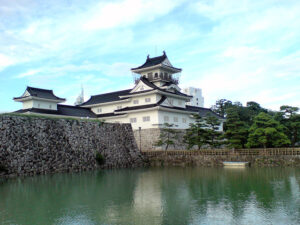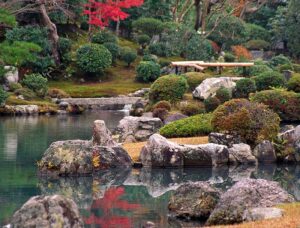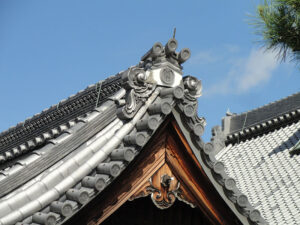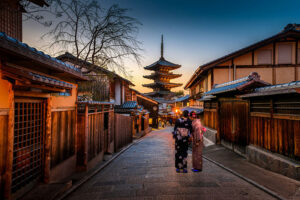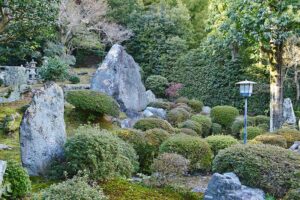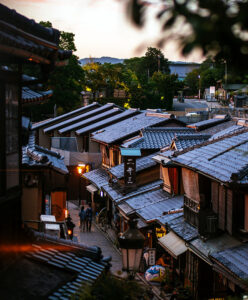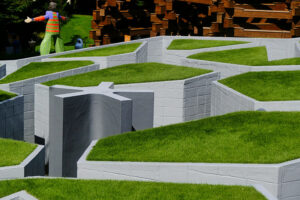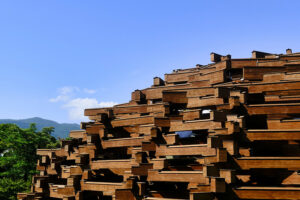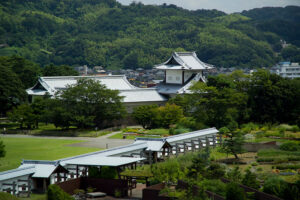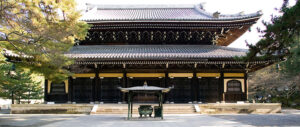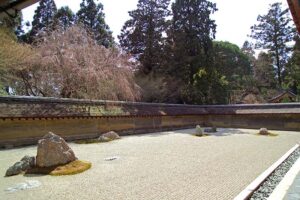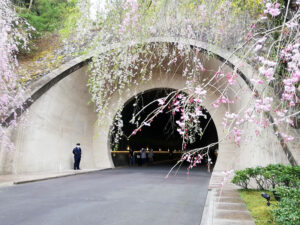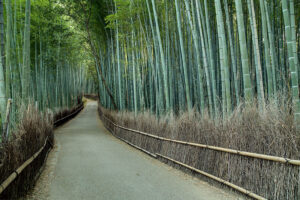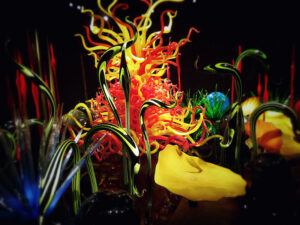Japan: Art and Architecture Under the Rising Sun
EVENTS > STUDY TRIPS ABROAD
STUDY TRIP ABROAD
September 15–28, 2025
In our first Study Trip Abroad to Asia, we venture to the beautiful island nation of Japan, celebrated for its rich cultural heritage and distinctive perspective. Step into a world where the past intertwines with the present and where the essence of tradition breathes life into every corner. Our bespoke itinerary includes exclusive tours of fascinating museums and sacred shrines, visits to renowned artist studios and galleries, and the chance to savor the authentic flavors of traditional Japanese cuisine. From the pulsing capital of Tokyo to the ancient city of Kyoto, join us for an unforgettable 13-day journey, where history, art, and craftsmanship come together in a majestic symphony.
REGISTRATION NOW CLOSED
Tour 1 and Tour 2 will operate concurrently September 15–28, 2025. They will cover the same destinations, inclusions, and scope of services, but their itineraries will run in reverse order from one another. The detailed itinerary for Tour 1 is listed below. While Tour 2 will have all the same experiences, its itinerary outline is:
September 15 – Tokyo
September 16 – Hakone
September 17 – Hakone
September 18 – Kyoto
September 19 – Kyoto
September 20 – Kyoto
September 21 – Kyoto
September 22 – Kanazawa
September 23 – Kanazawa
September 24 – Toyama
September 25 – Toyama
September 26 – Tokyo
September 27 – Tokyo
September 28 – Departure from Tokyo
Monday, September 15
We gather in Tokyo’s upscale Akasaka district at the elegant Capitol Hotel Tokyu, one of the city’s original grand hotels, which was thoughtfully redesigned by master architect Kengo Kuma. Our journey begins in the evening with welcome drinks, an overview of our itinerary, and a lecture on Japanese material culture from specialist Anne Alene. Afterward, we share a relaxing evening with a festive opening dinner.
Included: R, D
Overnight: TOKYO
Tuesday, September 16
Our morning in Tokyo commences by venturing to the venerable Meiji Jingu, a 1920s Shinto shrine dedicated to the deified spirits of Emperor Meiji and his consort, Empress Shoken. We then explore Omotesando, a fashionable neighborhood renowned for its impressive and cutting-edge architecture. Following lunch, we continue to the serene Nezu Museum where pre-modern Japanese and East Asian art and objects are housed in the former residence of Nezu Kaichiro, president of the Tobu Railway at the turn of the 20th century. Our day concludes with a visit to see the Imperial family’s extensive collection of art. Situated within the Imperial Palace East Gardens, the Museum of Imperial Collections, Sannomaru Shokoban, boasts some 20,000 objects, including a 16th-century screen by Kano Eitoku, a master artist of the Momoyama period (1573-1615).
Included: B, L
Overnight: TOKYO
Wednesday, September 17
Taking the comfortable Green Car on Japan’s world-renowned bullet train, we depart for Toyama, a coastal city nestled between the towering Tateyama Mountains and the tranquil Sea of Japan. We enjoy privileged access at the annual Go for Kogei Festival, a celebration of craft (kogei). Conversations with artists deepen our understanding of the connection between physical objects and their histories, cultures, and environments. Following lunch, we explore Japan’s feudal history at the 16th-century Toyama Castle. A visit to the Toyama Glass Art Museum introduces the city’s long history of glass making while showcasing a dazzling array of art glass from around the world. We arrive at the ANA Crowne Plaza Hotel for a pleasant group dinner.
Included: B, L, D
Overnight: TOYAMA
Thursday, September 18
Our day begins by visiting the studio of a kimono specialist where we learn about the key processes of crafting a traditional kimono, which has played a dynamic part in Japanese dress history. We continue across the Jinzu River to the Suiboku Museum, where we learn about the history and contemporary practice of Suiboku-ga ink paintings. After lunch, we explore the city’s newest attraction: the Toyama Prefectural Museum of Art and Design. The striking riverside building is the perfect place to showcase a rich collection of fine and decorative arts interpreted from a global, Japanese, and Toyama perspective.
Included: B, L
Overnight: TOYAMA
Friday, September 19
Our day begins with a coach ride to Kanazawa, a stunning castle town located along the Sea of Japan, where our accommodations at the Hotel Nikko Kanazawa serve as our refined home for the next two nights. Our morning is spent studying traditional craft, beginning with a visit to the studio of a lacquerware artist. Having perfected this unique decorative practice since the Nara Period (538–794), Japanese lacquer is the epitome of elegance, and maki-e (gold or silver) lacquer is one of the supreme achievements of Japanese decorative art. Lunch is followed by a visit to the remains of the Kanazawa Castle, one of the largest wooden structures surviving from the Meiji Era (1868-1912) and constructed entirely with traditional joining techniques—without a single nail or bolt. We conclude our day with a delicious dinner and a Noh Theater performance, among the oldest theatrical forms in the world.
Included: B, L, D
Overnight: KANAZAWA
Saturday, September 20
Kanazawa’s Nagamachi Samurai Quarter housed the warriors of the powerful Maeda clan—rulers from the 17th century to the 19th century. On a walking tour, we observe the district’s carefully preserved cobblestone streets and bukeyashiki, the traditional residences of samurai and their families. We then visit Myoryuji, a Buddhist temple also known as the Ninja Temple for its many trap doors and secret passageways. A local artist shares their studio and practice with us before a sumptuous lunch. Our afternoon begins with a visit to the Yoshiro and Yoshio Taniguchi Museum of Architecture, which is dedicated to the father-son duo celebrated for their designs fusing traditional Japanese and Modernist aesthetics. Our day rounds out in the Higashiyama Geisha District, a beautifully preserved historical area established in the 1820s and known for its wooden tea houses where geisha perform traditional dances.
Included: B, L
Overnight: KANAZAWA
Sunday, September 21
We depart Kanazawa by bullet train, venturing south to Kyoto, Japan’s ancient capital. Before entering the heart of the city, we stop at the scenic Ryoan-ji, a 15th-century Zen Buddhist temple that houses Japan’s most famous hiraniwa, or dry landscape garden. Following a peaceful and restorative tea ceremony and lunch, we continue to Kinkaku-ji, a rebuilt 14th-century temple nestled in Kyoto’s northern hills. Known as the Temple of the Golden Pavilion, the top two stories are covered with pure gold leaf. Continuing to the historic Higashiyama Ward, where traditional wood-framed houses and picturesque gardens line cobblestone streets, we settle into the serene and luxurious Tokyu Hotel Higashiyama for dinner and relaxation.
Included: B, L, D
Overnight: KYOTO
Monday, September 22
An early start presents a special opportunity to visit the c. 711 mountainside Fushimi Inari Shinto shrine and its seemingly endless path of vibrant vermilion torii gates, which served as symbolic gateways between the sacred and secular worlds. A walking tour of Kyoto’s Tera-machi, Kawaramachi-dori, and Sanjo-dori corridors introduces us to the city’s special blend of modernism with a historic reverence for antiques, design, and crafts. After lunch, we explore Ponto-cho and Gion, Kyoto’s famous geisha districts. A kirikane workshop visit allows us to study this time-honored technique of using thin strips of gold, silver, or copper to ornament Buddhist statues and paintings. The day ends with an option to observe traditional martial arts forms.
Included: B, L
Overnight: KYOTO
Tuesday, September 23
A morning of garden visits begins with an excursion to the western outskirts of Kyoto. The Sagano bamboo forest towers above, and we appreciate the acoustics of its stalks swaying the breeze, a government-recognized national soundscape. The nearby Tenryu-ji Zen garden, first constructed in the 14th century, is recognized as a UNESCO World Heritage Site and the best example of the Japanese technique of borrowed scenery, incorporating the landscape of the Arashiyama Mountains in the distance. After lunch, we visit the Saiho-ji moss garden and temple for a chanting ceremony and try our hand at the traditional calligraphy exercise of heart sutra. Our day concludes with a visit to the studio of a washi artist, who shares how the strength, translucence, and versatility of washi paper, made from the inner bark of the gampi tree, has been integral to Japanese culture for over a thousand years.
Included: B, L, D
Overnight: KYOTO
Wednesday, September 24
The Raku Annex at the Sagawa Art Museum features a spectacular collection of traditional teaware ceramics, made for 450 years by the Raku family of potters. The rest of our morning is spent at the celebrated and stunning Miho Museum, designed by I.M. Pei, which stands deep in the forested hills of Shigaraki. The museum’s collection includes Shinto and Buddhist paintings, ceramics, lacquerware, and tea ceremony utensils collected by founder Mihoko Koyama. The afternoon takes us to Ginkakuji, a 1490 Zen temple in Kyoto’s eastern Sakyo ward. Built for Shogun Ashikaga Yoshimasa as a pleasure villa, he converted it into a temple after becoming a Zen Buddhist monk. A stroll down the scenic Philosopher’s Path leads us to the Nanzenji Temple, the head temple of a Zen Buddhist sect and among the most important in Japan.
Included: B, L
Overnight: KYOTO
Thursday, September 25
We bid farewell to Kyoto and board the bullet train to Hakone, a mountain town known for its hot springs and views of Mount Fuji. The Hakone Open Air Museum celebrates its stunning vistas by exhibiting masterpieces by modern sculptors in a thoughtfully designed parkland. After lunch, we continue to the Hakone Museum of Art, which specializes in Japanese ceramics from prehistoric times through the Edo Period of the mid-19th century. The nearby Okada Museum of Art contains a more expansive collection, showcasing Japanese, Chinese, and Korean artworks. After settling into the Hyatt Regency Hotel and Spa, we gather for a convivial dinner.
Included: B, L, D
Overnight: HAKONE
Friday, September 26
We depart for a morning in Atami, where the MOA Museum of Art is spectacularly sited on the coast of the Izu Peninsula. Among the exhibits of paintings, calligraphy, and sculptures, MOA also features a Japanese style garden with tea houses and a noh theater. Lunch is followed by a visit to the Narukawa Art Museum. Situated next to Lake Ashi, it possesses masterpieces of nihonga, a unique Japanese style of painting that uses mineral pigments on silk or paper. We continue to the tranquil Hakone Shrine, which, with its striking torii gate, has been peacefully situated along the shore of Lake Ashi for more than 12 centuries. We follow with a visit to a Zen monastery to see works by the celebrated contemporary nihonga artist, Hiroshi Senju.
Included: B, L
Overnight: HAKONE
Saturday, September 27
Making our way back to Tokyo, we pause at Odawara Castle. Reconstructed in the 20th century, the castle’s history dates to the 15th century when it was the home base of the Hojo clan, the rulers of Odawara for over 100 years. We stop at the nearby Enoura Observatory to study a range of Japanese architectural styles before enjoying lunch. Returning to the Capitol Hotel Tokyu, we conclude our travels in Japan with a festive closing dinner and toasts of kanpai!
Included: B, L, D
Overnight: TOKYO
Sunday, September 28
Transfers to Tokyo Haneda or Tokyo Narita International Airports for stateside departures
Included: B
Land Arrangement Cost: $17,100 per person, based on double occupancy for 13 nights.
Included in Trip Cost: Hotel accommodations in 4-and 5-star hotels, 13 breakfasts, 12 lunches, 1 reception, and 7 dinners. Airport transfers, private coach transportation, local guides, admission in museums, historic houses, and gardens, gratuities for professional guides and coach drivers, and porterage.
Not Included in the Trip Cost: Airfare, alcoholic beverages other than when provided, personal expenses, and trip insurance are not included. Please do not make your airline reservations until you have received written confirmation of your registration from the Trust.
Reservations: A deposit of $4,000 per person is required at the time of registration. Deposits are subject to a $1,000 administrative fee in the event of cancellation. Please see “Cancellation and Refunds” for more information. Reservations and deposits are taken on an as-received basis. You will receive written confirmation from the Decorative Arts Trust when we receive your registration.
Single Supplement: The single supplement is $2,900 to be paid with the final balance.
Payment Schedule: For Tour 1, 50% of the tour balance will be due on December 15, 2024. The remaining balance will be due on March 31, 2025. For Tour 2, 50% of the tour fee will be due on February 14, 2025, and the remaining balance will be due on May 2, 2025.
Membership: Membership at the Sponsor level is required for participation in Study Trips Abroad. Your membership contribution is tax-deductible. If an increase in your membership level is necessary, the Trust will invoice you for the appropriate level upgrade with your final payment.
Contribution: A donation to the Decorative Arts Trust of $500 per person is required for Study Trips Abroad. This gift is fully tax deductible and helps support the Trust’s mission and programs.
Itinerary: The schedule outlined in this itinerary is contracted at this time but subject to change as necessary.
Participation: The trip is limited to a maximum of 25 members and requires a minimum of 20. The trip will be canceled if under- subscribed, and deposits will be refunded. While proof of COVID-19 vaccination is not required, participants should be prepared to test and wear masks when requested.
Activity Level: The Trust’s Study Trip Abroad itineraries are planned with care and attention to detail to ensure a memorable and rewarding trip for all its participants. This itinerary is strenuous and includes standing for extended periods of time, walking on uneven surfaces, and ascending and descending stairs without handrails. Please consider if this program is suited for your health, physical condition, and individual circumstances.
Cancellation and Refunds: If you must cancel your reservation, you are urged to do so as soon as possible in writing to the Decorative Arts Trust. All cancellations are subject to a $1,000 administrative fee per person. For Tour 1, deposits are fully refundable (less the administrative fee) through November 1, 2024. Deposits are refundable 50% through December 14, 2024. Deposits become nonrefundable after December 14, 2024. Cancellations arriving by February 14, 2025, will receive a 50% refund of the balance payment. Cancellations arriving by May 14, 2025, will receive a 20% refund. There will be no refunds for cancellations received after May 14, 2025. For Tour 2, deposits are fully refundable (less the administrative fee) through January 14, 2025. Deposits are refundable 50% through January 31, 2025. Deposits become nonrefundable after January 31, 2025. Cancellations arriving by February 28, 2025, will receive a 50% refund of the balance payment. Cancellations arriving by May 31, 2025, will receive a 20% refund. There will be no refunds for cancellations received after June 1, 2025.
THE TRUST STRONGLY ENCOURAGES ALL PARTICIPANTS TO PURCHASE TRAVEL INSURANCE TO PROTECT AGAINST CANCELLATIONS DUE TO ILLNESS, INJURY, AND OTHER DISRUPTIONS.

